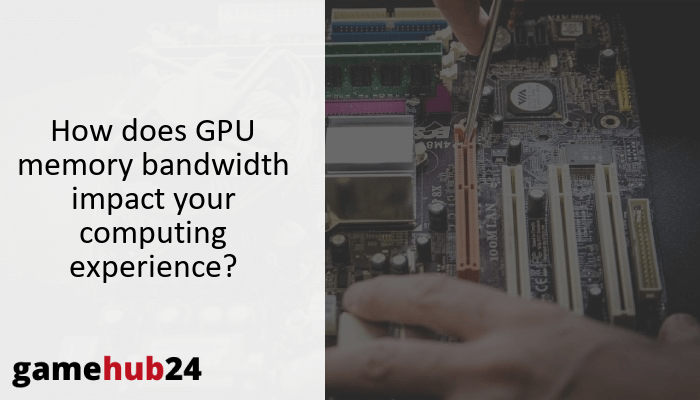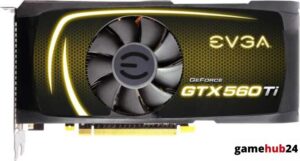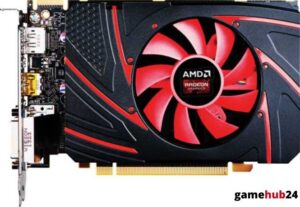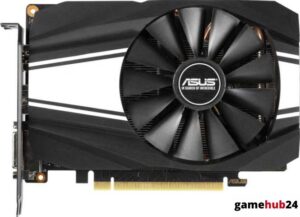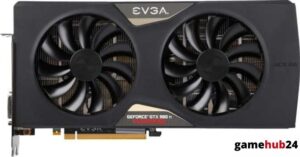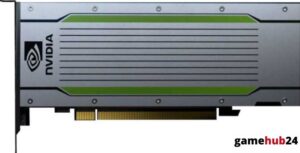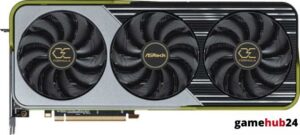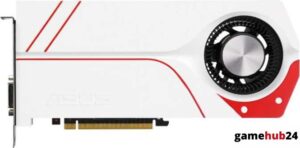A crucial component of Graphics Processing Units (GPUs) that greatly affects their performance in a variety of applications, such as virtual reality, gaming, and professional software, is GPU memory bandwidth. Understanding GPU memory’s function and significance can help one to better appreciate how these crucial computing components work as a whole.
Discover the intricacies of GPUs—from its fundamental parts, such as Stream Processors and CUDA Cores, to the importance of Texture Mapping Units and Render Output Units. Discover how performance is affected by pixel rate and texture rate as well as the function of GPU memory in high-definition gaming and business applications. Learn about the distinctions between HBM2, GDDR5, GDDR6, and VRAM as well as how Memory Clock affects GPU performance. Recognize the function of the Memory Interface and the impact of GPU memory bandwidth on performance. Examine the connection between GPU memory bandwidth and memory speed and how it affects VR and gaming experiences. Find out how GPU memory bandwidth affects professional applications such as video editing and 3D rendering. Recognize the technical parameters to take into account when assessing GPU memory bandwidth as well as how OpenGL and DirectX affect GPU performance. Discover how GPU memory bandwidth is impacted by the PCI Express interface and why Teraflops are important for assessing GPU performance. Finally, learn how power consumption and VR readiness are related to GPU memory bandwidth.
- Explore the role and components of GPUs in computing.
- Understand the importance of GPU memory and its influence on performance.
- Learn about the impact of GPU memory bandwidth on gaming, VR, and professional applications.
- Discover the technical specifications to consider when evaluating GPU memory bandwidth.
- Understand how GPU memory bandwidth relates to power consumption and VR readiness.
What is the role of a Graphics Processing Unit (GPU) in a computer?
At the heart of a computer’s ability to perform visual computation is its Graphics Processing Unit (GPU). It’s a specialized electronic circuit made to quickly access and modify memory in order to speed up the process of creating images in a frame buffer that will be output to a display device. GPUs are found in game consoles, workstations, mobile phones, embedded systems, and personal computers. Their extremely parallel structure makes them more effective than general-purpose CPUs for techniques where the processing of huge blocks of data is done in parallel. They are very excellent at manipulating computer graphics and image processing.
What are CUDA Cores and Stream Processors?
A GPU’s Stream Processors and CUDA Cores are its brains. NVIDIA created the phrase “CUDA Cores,” which refers to parallel processors that function well while processing several tasks at once, much like a computer’s processor. AMD’s version of CUDA Cores, however, are called Stream Processors. They are made to handle data from video streams and carry out efficiently parallelizable computations. A GPU may work quicker and more effectively by handling more jobs at once the more CUDA Cores or Stream Processors it has.
How do Texture Mapping Units and Render Output Units function?
Render Output Units (ROPs) and Texture Mapping Units (TMUs) are essential GPU parts. Applying or “mapping” textures to 3D models or polygons is the responsibility of TMUs. They deal with the difficult task of figuring out how textures encircle an object’s angles and curves in three dimensions. In contrast, ROPs handle the last stage of rendering, which involves taking the data that has been processed and turning it into pixels that will be seen on the screen. A GPU’s performance can be strongly impacted by the quantity of TMUs and ROPs it contains.
Did you know that NVIDIA debuted the first GPU back in 1999? With a processing speed of 10 million polygons per second, it was known as the GeForce 256 and represented a significant advancement in graphics capability at the time.
What is the significance of Pixel Rate and Texture Rate?
Two of a GPU’s most important performance metrics are Pixel Rate and Texture Rate. The number of pixels a GPU can process in a second is referred to as pixel rate, also called pixel fillrate, and it directly influences the highest resolution and refresh rate that a GPU can support. The quantity of texture map elements (texels) that a GPU can process in a second is known as texture rate, also known as texel fillrate. For apps and games with intricate textures, this is essential. In general, a GPU with a greater pixel and texture rate can handle higher resolutions and more intricate textures, which improves performance and image quality.
What is GPU memory and why is it important?
GPU memory is a specific type of dynamic RAM (DRAM) found on graphics cards. It is often referred to as Video Random Access Memory (VRAM). The data for every pixel on the screen is stored in the frame buffer, which is kept in a high-speed memory. A GPU can store more data for fast access with greater VRAM, which lessens the requirement for slower system memory. This is especially crucial for professional applications like video editing and 3D rendering, where enormous volumes of data must be accessible quickly, and for high-resolution gaming.
What is the difference between Video RAM, GDDR5, GDDR6, and HBM2?
GDDR5, GDDR6, HBM2, and Video RAM (VRAM) are the many memory types found in GPUs. Any memory utilized by a video card is referred to as VRAM in general, and there are three distinct forms of VRAM: GDDR5, GDDR6, and HBM2. High-performance graphics cards are intended for the synchronous graphics RAM types GDDR5 and GDDR6. They provide adjustable refresh capabilities and high bandwidth. High-performance RAM interface for 3D-stacked DRAM found in high-performance graphics cards is called HBM2, or High Bandwidth Memory 2. Although it is more costly to develop than GDDR5 and GDDR6, it gives a far better bandwidth.
How does Memory Clock influence GPU performance?
The performance of a GPU is largely dependent on its Memory Clock, often known as memory speed. It speaks about how quickly the GPU’s VRAM runs, which has an immediate impact on how quickly data can be read from and written to memory. Higher frame rates and more fluid gameplay in games and applications might result from faster data processing caused by a higher memory clock. It’s crucial to remember that memory clock performance is only one component of GPU performance, and that memory bandwidth and core count must also be taken into account.
Advice for VR aficionados and gamers: Consider more factors than only VRAM when selecting a GPU. In order to achieve smoother performance, take into account the memory bandwidth (measured in GB/s). This has an impact on how rapidly data can be retrieved and processed.
What is the role of Memory Interface in a GPU?
The data path that links the GPU core to the memory in a GPU is called the Memory Interface, and it is frequently expressed in bits. It is essential for figuring out the GPU’s memory bandwidth, or how quickly the GPU can read from and write to its VRAM. More data can be sent at once via a larger memory interface, which can improve performance, particularly in demanding professional applications and high-resolution games. It’s a trade-off between performance and efficiency because a bigger memory interface also uses more power and produces more heat.
How does GPU memory bandwidth affect performance?
GPU memory bandwidth, expressed in GB/s, is a crucial component that affects how well a GPU performs. It speaks about how quickly data may be written to or read from the GPU’s VRAM. Higher memory bandwidth allows the GPU to process data more quickly, which improves gaming and application performance. It’s crucial to remember that memory bandwidth is only one component of GPU performance, and that it must be balanced with other elements like core count and memory clock speed.
What is the relationship between Memory Speed and GPU memory bandwidth?
GPU memory bandwidth and memory speed are strongly correlated. Memory bandwidth is the quantity of data that may be transmitted to and from the VRAM per second, whereas memory speed, also known as memory clock, is the pace at which the GPU’s VRAM functions. Higher memory bandwidth might result from faster memory, but memory interface width is also very important. Memory bandwidth can be increased by using a broader memory interface since it enables more data to be sent simultaneously. For best results, though, a compromise must be achieved between memory speed, memory interface width, and other elements including power consumption and heat generation.
How does GPU memory bandwidth influence gaming and VR experiences?
The amount of GPU memory bandwidth affects virtual reality (VR) and gaming significantly. A lot of data is frequently involved in games and VR applications, and this data needs to be promptly retrieved and processed. These data-intensive jobs can be handled more effectively by a GPU with high memory bandwidth, which improves speed and yields greater frame rates and higher quality images. This is especially crucial for VR and high-resolution gaming, where fast access to massive volumes of data is necessary to provide a fluid and immersive experience.
What is the impact of GPU memory bandwidth on professional applications like 3D rendering and video editing?
In professional applications like 3D rendering and video editing, GPU memory bandwidth is essential. These applications frequently handle massive volumes of data and intricate calculations that need for rapid memory access. These operations can be handled more effectively by a GPU with high memory bandwidth, which results in quicker rendering speeds and more fluid performance. For professionals working in industries like animation, film production, and architectural visualization, this can greatly increase productivity and workflow.
What are the technical specifications to consider when evaluating GPU memory bandwidth?
In assessing GPU memory bandwidth, it is important to take into account many technical details. These consist of the number of cores, memory clock speed, memory interface width, and memory type (e.g., GDDR5, GDDR6, HBM2). The memory bandwidth and overall performance of the GPU can be affected by each of these variables. A GPU with a wide memory interface and a high memory clock speed, for instance, may be able to provide high memory bandwidth; however, the kind of memory and the number of cores may also have an impact on real performance.
What is the role of DirectX and OpenGL in GPU performance?
Software interfaces like DirectX and OpenGL let apps communicate with the GPU. Because they make it possible to utilize a GPU’s capabilities effectively, they are essential in deciding how well it performs. Microsoft created DirectX, which is extensively utilized in PC gaming and supports sophisticated graphical features. Conversely, OpenGL is an open standard that is utilized in CAD software and gaming, among other applications. The compatibility and performance of a GPU with various games and applications can be influenced by its support for various DirectX and OpenGL versions.
How does PCI Express interface affect GPU memory bandwidth?
The interface that connects the GPU to the rest of the computer is called the PCI Express (PCIe) interface. By influencing the rate at which data may be moved to and from the GPU, it is essential in defining the memory bandwidth of the GPU. Higher memory bandwidth may be possible with a faster PCIe interface, but other considerations like the GPU’s memory clock speed and memory interface width may also have an impact on real performance. It is significant to remember that for the GPU to function correctly, the PCIe interface and the motherboard must be compatible.
What is the significance of Teraflops in measuring GPU performance?
The computational power of a GPU is measured in teraflops, or trillion floating-point operations per second. It’s a helpful indicator for evaluating how well various GPUs perform, especially when it comes to sophisticated computations like scientific computing and 3D graphics. A more powerful GPU is indicated by a bigger number of teraflops, but it’s vital to remember that real performance can also be impacted by other elements like memory bandwidth and architectural efficiency.
How does GPU memory bandwidth relate to power consumption and VR readiness?
Power consumption and VR readiness can be significantly impacted by GPU memory bandwidth. Faster data processing on a GPU with a high memory bandwidth may result in increased power consumption. Power management techniques and effective memory designs, however, can lessen this. In terms of GPU preparation for virtual reality, it must have enough memory capacity to support the high-resolution, high-refresh-rate images that VR demands. A smooth, immersive VR experience is more likely to be provided by a GPU with high memory bandwidth.
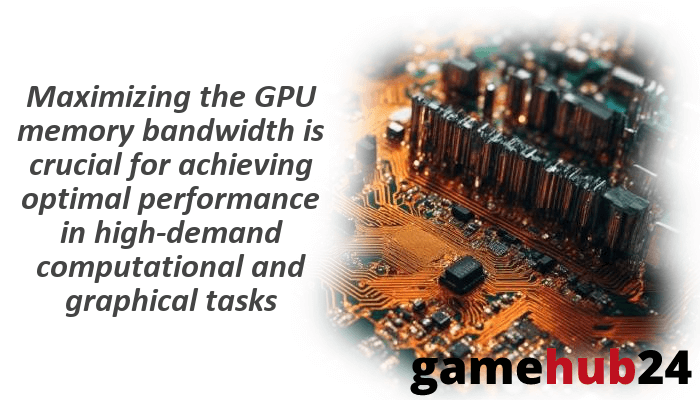
How does GPU memory bandwidth affect Power Consumption?
Power consumption can be significantly impacted by GPU memory bandwidth. The GPU needs more power to move data to and from the VRAM the faster the memory bandwidth. However, other elements like the GPU’s architecture and power management methods also have an impact on power usage. Certain GPUs have energy-efficient architectures that allow them to provide high memory bandwidth with minimal power usage. When selecting a GPU, it’s critical to take memory bandwidth and power consumption into account because these factors can impact the system’s effectiveness and performance.
What makes a GPU VR Ready and how does memory bandwidth play a part?
If a GPU possesses the performance and functionality required to provide a seamless, immersive VR experience, it is deemed VR Ready. One aspect of this is having enough memory capacity to support the high-resolution, high-refresh-rate images that virtual reality demands. Because memory bandwidth impacts how quickly data can be accessed and processed, it is essential to VR preparedness. In addition to lowering the chance of motion sickness and enhancing immersion, a GPU with high memory bandwidth can provide a smoother, more responsive VR experience.

